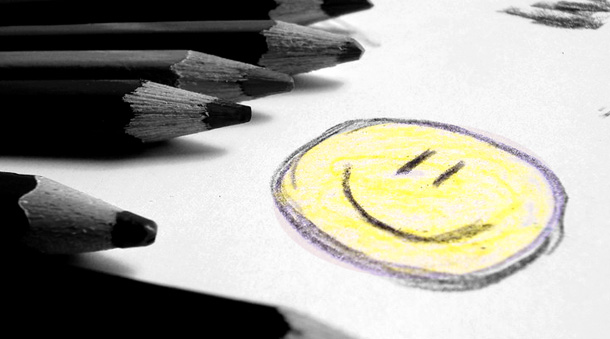Reflection and critique on the development of location-based mobile applications.
Location-based applications are the new hype. Their presence is prominent in festivals, conferences and symposia that address to new media technologies, or to use the most recent terminology, that address to cross media developments. Thinkers and researchers either praise their possibilities and robustness or spread the fear concentrating in the malicious way that they may detect human and objects in a regular and continuous basis. The business world, on the other hand, seems to be more aware of how to interpret, exploit, and promote the use of these media.
The assumption seems to be that demo design and fast production are a distinct domain than that of the social critique, the theoretical investigation and creative practice. For the moment, the first domain is gaining more and more recognition in the expense of the latter one. But why are location-based applications becoming more and more market driven? Should someone who seeks for a deeper and more liberating understanding and appropriation of these technologies, feel that his approach is idealistic and cannot be applied to our modern world? Should we cope with the business requirements and not try to give meaning and make things matter? Having all these questions in my mind, I found Delouze’s quote inspiring and reassuring:
“There is no need to fear or hope, but only to look for new weapons”
So how do we value the sociocultural aspect? How do we perceive the user and the user’s feedback in the designing process of a location-based application? I believe that these are very important questions that define the design process as well as the role and the meaning of the end product. I will resort to early new media art theory and to the concept of microdesign in order to support the points that I want to make. Reading and combining R. Ascott’s article about “the construction of change” and R. Coyne’s book about “the tuning of place” I found some similarities that seems to offer interesting jumping off points to think:
Ascott asserts that art is largely a matter of freely developing ideas and creating forms and structures which embody them. In these structures relationships are altered so the ideas they stand for are extended.
“Physical moves may lead to conceptual moves, in which Behaviour relates to Idea”
He also suggests that it is not enough to accept our condition or simply to enjoy it as artist’s moral responsibility it to understand the extensive changes in our society that are mostly attributed to science and technology. What I found very interesting in Ascott’s text and made me relate his thinking to the designing process of a location-based mobile application is his statement that “the setting of material limitations with which one is familiar with, sets out the discovery of the unknown”. The artist, and in our case the designer, could (or should) stake everything on finding the unfamiliar, the unpredictable. But where are these unfamiliar, these unpredictable aspects and how can we abet their emergence? What if we turn into that very “ordinary everydayness” and have a better look.
I agree with Coyne’s assertion that “a concern with the familiar and the everyday suggests engagement with the simple things in life but also indicates involvement with complex interconnections rather than a consideration of isolated, independent, and idealized objects”. Thus, is a process that highlights the importance of social contexts, practices and cultures. So how can we actually take advantage of the concept of “microdesign”, that Coyne suggests, in this engagement? His approach opposes to the vague and sometimes endless theoretical research on complex systems and networks and brings to the fore the importance of small-scale developments, and the incremental change in order to gain insight in the way technologies weave into our lives and the consequences of this interrelation. In other words, he brings to the fore all these small interventions that may tweak and spin our ordinary everydayness.
Theoretical research combined with a more active engagement with the technologies under-study should provide a more systematic and realistic understanding of this interplay and bridge the theoretical-technical void. Rather than trying to formulate a social, communicational, psychological theory in order to understand the relations between the techno-social elements I believe that we also need to start “experimenting” with the technologies, experimenting with the limited structures that they provide in order to imagine the way they may evolve and to provide an alternative theoretical “way out” to all emerging technical developments. I suppose this is where we have to dig in more in order to find some answers to all these questions arousing when we are embarking on a locative/pervasive media dialogue.
In this text, I have tried to put into words my initial thoughts and concerns about the designing process and future development of location-based applications. This thoughts were triggered by my recent involvement in a small-scale designing challenge to produce a mobile-application in the context of The Best Scene in Town initiative that took place at the PICNIC festival in Amsterdam.
Thinking of pervasive and mobile technologies as means to extent our ideas and our understanding of the everyday and as devices that align human practices and “tune” human interactions, I believe that is an alternative starting point for designing and engaging with the technologies under-study. A point that may emancipate the researcher’s and the designer’s mind from the strict, technical and communicational paradigms and standards and provoke them to “drift” and imagine of different scopes and deployments.
“When tuning is thought as a design process, within this process we all become designers, improvisers, collaborators and calibrators” (Coyne)
References:
Roy Ascott, “The Construction of Change” (1964)
Richard Coyne, “The Tuning of Place: Sociable Spaces and Pervasive Digital Media” MIT Press (2010)
Gilles Deleuze, “Postscript on the Societies of control” (1990)
*******************************************************************************
[More information about the location-based project i was involved in can be found here]
*******************************************************************************
